Composer Rafael Nassif X
Ensemble Free EAST
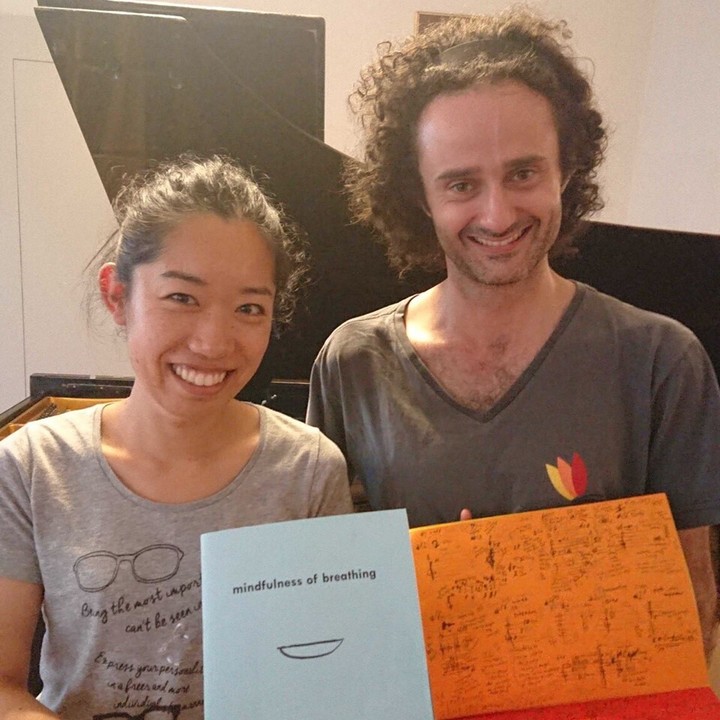
The commission to Mr. Rafael Nassif was implemented in 2018. Thanks to the introduction by Mr. Reison Kuroda, a Shakuhachi player. Mr. Kuroda who has been active in premiere
performances expresses Mr. Nassif as “a composer who changes one’s view of the world”. Mr. Nassif also respects Mr. Kuroda and his performance. He willingly accepted our commission and
composed a piece for a solo wind instrument and the orchestra, expecting Mr. Kuroda to join in the piece.
In early July, Hayashi (concertmistress) met and interviewed Mr. Rafael Nassif at Graz in Austria where he is based.
- Hayashi
- First of all, thank you for such a beautiful piece. Mr. Ryosuke Asano, our conductor, would also love to thank you in person, do you have any plans coming to Japan?
- Nassif
- I would love to go to Japan again.
- Hayashi
- Oh, so you came to Japan before. When was that?
- Nassif
- Yes, I came in June 2017 for "The Irino Prize for Chamber Music Composition Prize Winner's Concert Vol.2".
- Hayashi
- What did you think of Japan?
- Nassif
- The Japanese musicians were very kind to me. They take the musical work with great respects towards the composer and the score.
The Road to Become a Composer
- Hayashi
- Why did you choose to become a composer?
- Nassif
-
I can not say that I've 'chosen'... it was more a natural process.
I was listening to the music during my whole childhood. Some time after I began my first formal musical lessons (quite later, with 10 years old), I started to write my own compositions. I composed many scores for my instrument, the piano, and then started to add more instruments etc. All this alone, as I lived in a small town where no composition course was available.
As a teenager I could travel to other cities and began to exchange with professional composers, who encouraged me a lot. With 15 years I gave a piano recital with my own compositions, so afterwards it was clear that this would be my main path in the music, then I've started (finally!) my formal studies in composition in Belo Horizonte at UFMG.
- Hayashi
- What kind of music did you used to listen to in your childhood and how does it relate to composing a piece?
- Nassif
-
Although my father is not a musician, he is a music lover and at that time, he already had a huge collection of LPs and CDs. It included a very wide range of musical styles. But I
personally liked more the instrumental music, we listened to progressive rock a lot, and slowly my interest in classical music turned to be in focus.
Afterwards I came in contact with the modern music and with the contemporary music - those discoveries were really big steps and have inspired me a lot. They shown me another way to seeing things, beyond the traditional concepts. A "new possible world" with sound.
- Hayashi
- Is there anyone who has inspired you especially?
- Nassif
-
Concerning the international composers, the list is quite big...but I can mention the Brazilian composers at that time, who directly helped and supported my development: Marlos
Nobre, Almeida Prado, Marcos Balter, Edmundo Villani-Côrtes.
My piano teacher, André Pires, is a great musician and also inspired me a lot during my youth.
- Hayashi
- I am afraid we don't know much about them. What genre of music do they play?
- Nassif
-
Oh do not worry. The first four are composers.
Marcos Balter is a very active composer nowadays in USA, a very professional musicians. From Marlos Nobre I can recommend to listen to 'concerto breve', 'ukrinmakrinkrin', 'tocatina, ponteio e final', 'quarteto de cordas 1'.
Almeida Prado has already passed way in 2010. I've composed a small piano ('ainda que sob véus') piece in his memory. He was a close student from Messiaen. I like specially 'cartas celestes 1' from him.
Edmundo Villani-Côrtes has written a wide number of pieces, he is a very gentle, humble musician, and often includes influences of Brazilian popular music in his own compositions.
- Hayashi
- Thank you very much. We will listen to the pieces.
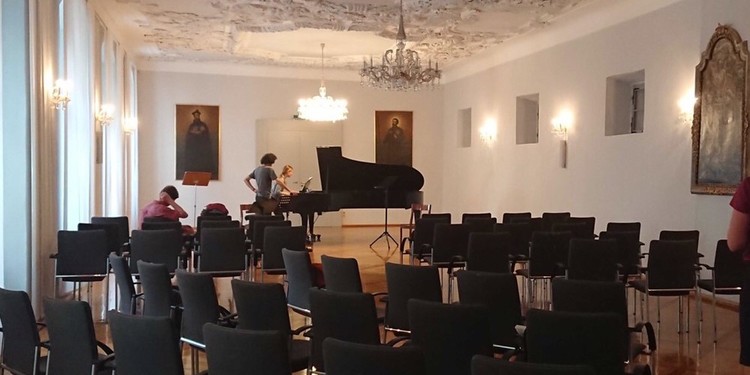
The Pleasure of Composing
- Hayashi
- When do you enjoy the most when composing?
- Nassif
- This is a difficult question...because often the composition process is not comfortable. I feel like I give my mind and body in service of the composition. I love music in general, so when I have the feeling that the expression is pure as possible, everything is in their right place - not too much, not too many - is a wonderful experience. It brings me beyond the concepts. So I try to find this balance when composing. And when I am able to achieve it properly; the best feeling for me as a composer.
- Hayashi
- Was it the same for the piece 'mindfulness of breathing'?
- Nassif
- I would say yes, when I listen to the piece internally. I was very happy with the results, also when it is a quite 'simple' piece. I see great chances there of a deep musical experience.
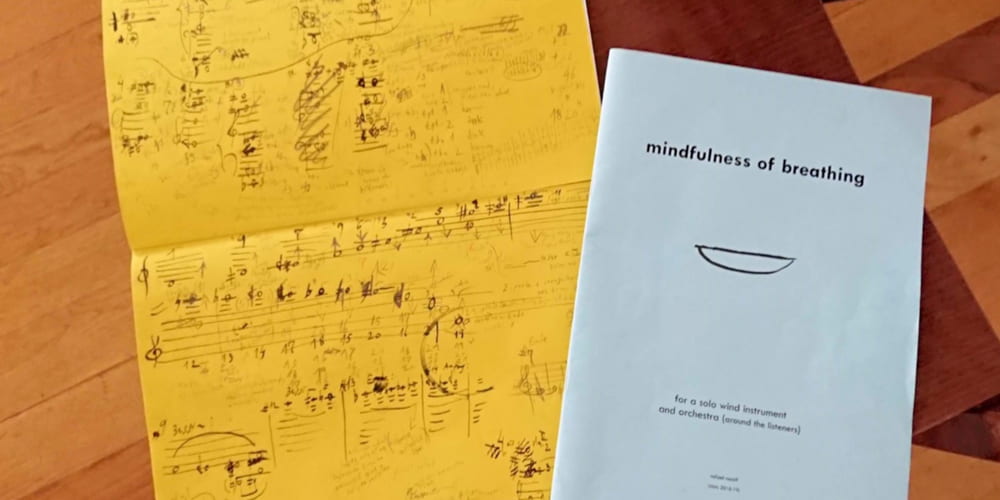
mindfulness of breathing
- Hayashi
- How did you come up with the ideas of composing 'mindfulness of breathing'?
- Nassif
- I think that the first ideas came already during the first contacts with Mr. Ryosuke Asano in February 2018. I had two ideas, the other one would use the Mozart flute concerto, so very different from this one. And the idea for 'mindfulness of breathing' was very clear; long tones from the soloist expand in the orchestra and come back to the soloist, as a big breath. Also, I really wanted to write a piece for Reison. So I've decided to develop this idea. Afterwards I've remembered that I have had a very similar idea in 2009, but I did not went on to write it during these years in between.
- Hayashi
- In the piece, which part of the piece do you think is the most important?
- Nassif
- It is difficult to discern; anyways, the relationships between the different parts are the most important, I would say.
- Hayashi
- Why did you choose to place performers in those orders?
- Nassif
- I wish to have the orchestra as an expansion of the soloist. So the musicians spread in the space, contribute for this. Also the stereophony enriches the musical experience and makes the live performance of the piece a unique event. But the piece can also be performed with the musicians together, in case it is impossible to place them into space.
- Hayashi
- Do you mean, we pass over the "Breathe" between Mr. Reison Kuroda and the orchestra?
- Nassif
- Yes! You breathe together.
- Hayashi
- Can I ask if there are any reasons why the tuba and the crotales are at the end of the line on each side? Are there any rules for the order of the instruments?
- Nassif
- The tuba and the crotales are also spread on the space. It starts with the violin I-1 and then one woodwind instrument is added, then again the violin, then one brass instrument, and so on until all the violin parts are finished then it goes lower to the viola and so on. The right side is the opposite, so we have a balance between higher and lower instruments. The crotales and the vibraphones are optional and they enhance the strings, so because of that they are placed on the extremities, as a 'reverb' of the strings.
- Hayashi
- As a result, what impressions do you reckon we can give to the audience concerning these effects?
- Nassif
- I wish to enhance the musical experience, as in this way the audience will be placed 'inside'. I wish to offer more layers of musical perception, more subtle ones with that. For instance, often the long notes are exchanged between the doublebass 1 and 2 or the tuba - as they are in very different places, I wish to create an interesting, 'vertigo' feeling, so that the space is also heard as element of the musical composition. Or then between the two clarinets, right/left side exchange.
- Hayashi
- What is the meaning of the circular bowing * for the strings?
* Very slow and continuous bowing carried in circular motion between molto al ponticello --- molto sul tasto and vice-versa.
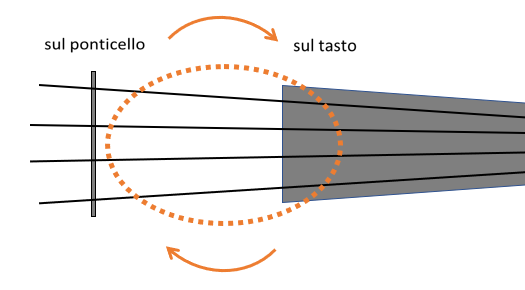
- Nassif
- It confers a rich, always changing quality of sound, and also makes very long notes a natural process.
- Hayashi
- I see. And this piece begins with D note. Why did you choose D?
- Nassif
- I don’t remember well about the reason, but I remember that the lowest tone of soprano Shakuhachi is D. It’s possible that it influenced the choice.
- Hayashi
- At last, would you like to comment anything to Japanese audience who will be coming to listen to your piece in the concert?
- Nassif
- Do not have big expectations, just relax and stay connected to the 'breaths'. (may be you can close your eyes)
- Hayashi
- Thank you very much again for your time. I hope to see you again!
- Nassif
- For sure, thank you very much for the interest in my music!
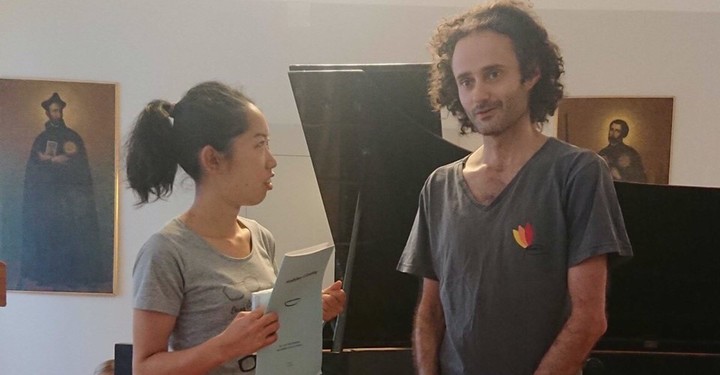
Thank you Mr. Nassif!